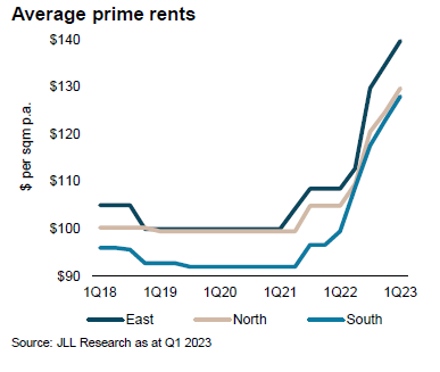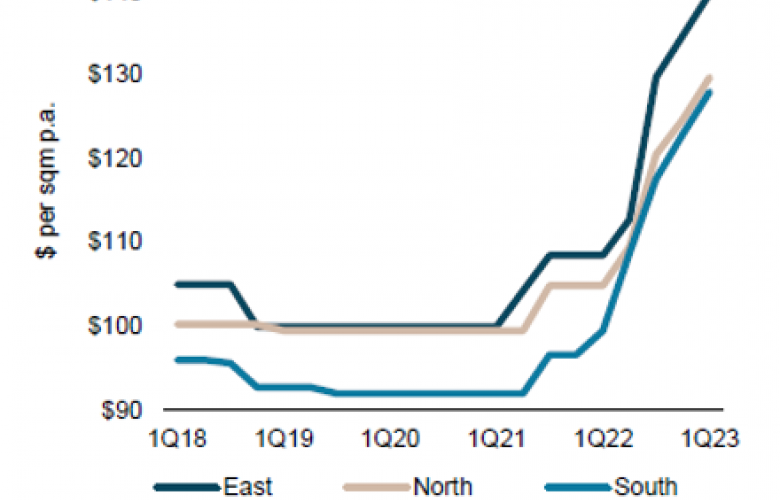Perth industrial and logistics market records unprecedented rental growth across all precincts - JLL
Contact
Perth industrial and logistics market records unprecedented rental growth across all precincts - JLL
According to JLL, the industrial and logistics market continues to outperform other commercial property market sectors in WA with gross take-up in the year to March 2023 above the 10-year average as well as record rental growth over the 12-month period.
JLL’s Q1 2023 Research figures show the strongest year-on-year rental growth on record across all Perth industrial and logistics precincts.
Annual prime rents in Perth’s East precinct were up 28.8% over the 12-month period, while the South and North precincts also recorded notable increases of 28.6% and 23.7% respectively.

JLL’s Head of Logistics & Industrial – WA, Matt Brunsdon said, “In Q1 2023, average prime existing net rents increased across all Perth industrial precincts, marking the fourth consecutive quarterly increase in rents.
“The surge is reflective of Western Australia’s economy, which has resulted in significant growth in industrial development and an influx of occupiers seeking to establish themselves. Current and future demand for industrial space will continue to be supported by the transport, postal and logistics industry expanding operations, as well as the significant increase in mining/resource related demand which will continue to underpin this sector,” added Mr Brunsdon.
While the rental growth has been exceptional, there was a decrease in occupier demand within the Perth industrial leasing market. According to JLL Research, occupier demand decreased in Q1 2023, with gross take-up of 21,300 sqm. This shift can be attributed to historically low vacancy and supply across the sector. Nevertheless, year to March 2023 take-up totalled 238,500 sqm; above the 10-year average of 207,000 sqm.
New supply of industrial space will assist to satisfy some of the near-term occupier requirements, with seven major developments currently under construction expected to be completed by Q4 2023.
“The construction activity highlights confidence amongst investors and developers in the Perth industrial and logistics market. This is expected to have a ripple effect on related industrial sectors, generating an increased demand for construction materials and equipment which will contribute to broader economic growth. The added supply will not only accommodate the demand of existing occupiers, but also attract new investment into the market,” said Mr Brunsdon.







